This article reviews the synthesis and applications of cyclodextrin (CD)-containing layer-by-layer (LbL) films and microcapsules. CD-containing LbL films and microcapsules have been synthesized through the electrostatic interactions between charged CDs and polyelectrolytes or the formation of host–guest complexes. In the former strategy, sulfonated and carboxylated CDs are often combined with oppositely charged polyelectrolytes. In contrast, in the latter strategy, CD-bearing polymers and guest-modified polymers are used as components of LbL assembly. Typical guest molecules include adamantane, ferrocene, and azobenzene derivatives. Electrochemical biosensors have been constructed by coating the surface of electrodes with CD-containing LbL films. In addition, CD-containing LbL assemblies are used as scaffolds for constructing drug delivery systems, in which hydrophobic, poorly soluble drugs are loaded on the film through host–guest complexation.
1.
Introduction
The wighted version of Hadamard inequality known as Fejér-Hadamard inequality was established by Fejér in 1906. It is stated as follows:
Theorem 1. [1] Let ψ:[a,b]→R be a convex function. Further, let η:[a,b]→R be integrable non-negative function which is symmetric about a+b2. Then we have
The Hadamard inequality is obtained if we consider η(x)=1 in the inequality (1.1). The following definition of "convex function with respect to a strictly monotone function" is the key factor of this paper.
Definition 1. [2] If φ is strictly monotone function, then ψ is called convex with respect to φ if ψoφ−1 is a convex function.
Alternatively the Definition 1 can be taken as follows:
Let I,J be intervals in R and ψ:I→R be the convex function, also let φ:J⊂I→R be strictly monotone function. Then ψ is called convex with respect to φ if
for t∈[0,1],x,y∈Range(φ), provided Range(φ) is convex set. Therefore Definition 1 is equivalently defined by inequality (1.2).
Examples: [3] 1. Let φ(x)=x. Then φ−1(x)=x, the inequality (1.2) takes the form
2. Let φ(x)=lnx. Then φ−1(x)=expx, the inequality (1.2) takes the form
By replacing x with lnx and y with lny in (1.4), we get
3. Let φ(x)=1x. Then φ−1(x)=1x, the inequality (1.2) takes the form
By replacing x with 1x and y with 1y in (1.6), we get
4. Let φ(x)=xp,p>0. Then φ−1(x)=x1p, the inequality (1.2) takes the form
By replacing x with xp and y with yp in (1.8), we get
5. By replacing x with φ(x), y with φ(y), the inequality (1.2) takes the form
Inequalities (1.3), (1.5), (1.7) and (1.9) give convexity, GA-convexity, harmonic convexity and p-convexity given in [4,5,6]. Hence these independently defined notions are actually examples of a convex function with respect to a strictly monotone function.
Definition 2. [7] A function ψ will be called symmetric with respect to a strictly monotone function h about h(a)+h(b)2,a,b∈Domain(h), if
holds for all x∈Rang(h).
The notions of symmetric, harmonically symmetric, p-symmetric, geometrically symmetric are examples of Definition 2. These are defined explicitly in [8,9,10].
We have obtained the following versions of the Fejér-Hadamard inequality for convex function with respect to a strictly monotone function.
Theorem 2. [7] Let I,J be intervals in R and ψ:[a,b]⊂I→R be a convex function, also let φ:J⊃[a,b]→R be a strictly monotone function. Further, let ψ be convex with respect to φ, and η:[a,b]→R be non-negative integrable and symmetric with respect to φ about φ(a)+φ(b)2. Then the following inequality holds:
The aim of this paper is to give two Riemann-Liouville fractional versions of the Fejér-Hadamard inequality for convex function with respect to a strictly monotone function by using symmetricity with respect to strictly monotone function. These Fejér-Hadamard inequalities for specific strictly monotone functions will give results for convex, geometric convex, harmonically convex and p-convex functions published by different authors in [5,7,8,9,10,11,12,13,14,15,16]. The following definition gives the left as well as right Riemann-Liouville fractional integral operators:
Definition 3. [17] Let μ>0 and ψ∈L1[a,b]. Then Riemann-Liouville fractional integral operators of order μ are defined by:
where Γ(.) is notation for the gamma function.
The following theorem gives first fractional version of the Hadamard inequality for Riemann-Liouville fractional integrals.
Theorem 3. [15] Let ψ:[a,b]→R be a positive function with 0≤a<b and ψ∈L[a,b]. If ψ is a convex function on [a,b], then the following fractional integral inequality holds:
with μ>0.
Another version of the Hadamard inequality for Riemann-Liouville fractional integrals is given in the following theorem.
Theorem 4. [16] Under the assumptions of Theorem 3, the following fractional integral inequality holds:
with μ>0.
We have obtained the following fractional versions of the Hadamard inequality for Riemann-Liouville fractional integrals of convex function with respect to a strictly monotone function.
Theorem 5. [7] Let I,J be intervals in R and ψ:[a,b]⊂I→R be a convex function, also let φ:J⊃[a,b]→R be a strictly monotone function. Further, let ψ be convex with respect to φ. Then for μ>0 the following inequality holds for Riemann-Liouville fractional integrals:
Theorem 6. [7] Under the assumptions of Theorem 5, the following inequality holds for Riemann-Liouville fractional integrals:
In the upcoming section we establish two versions of the Fejér-Hadamard inequality for convex function with respect to a strictly monotone function by using Riemann-Liouville fractional integrals. These inequalities generate new inequalities by selecting different strictly increasing and decreasing functions of our choice. Several results published in [5,7,8,9,10,11,12,13,14,15,16,18,19] are deducible from the results presented in this paper.
2.
Riemann-Liouville fractional integral Fejér-Hadamard inequality for convex function with respect to a strictly monotone function
First we prove the following lemma:
Lemma 1. Let ψ be symmetric with respect to strictly monotone function φ about φ(a)+φ(b)2, and φ∈L[a,b]. Then the following identity holds for Riemann-Liouville fractional integrals:
Proof. From definition of Riemann-Liouville fractional integrals we have
By setting φ(a)+φ(b)−u=z in (1.13) we get
By using symmetricity of ψ with respect to strictly monotone function φ about φ(a)+φ(b)2, we get Iμφ(a)+ψ(b)=Iμφ(b)−ψ(φ−1(φ(a))) and hence (2.1) is obtained.
Remark 1. (i) By setting φ(x)=1x in (2.1), we get [20,Lemma 2].
(ii) By setting φ(x)=xp,p≠0 in (2.1), we get [21,Lemma 1].
By using Lemma 1 we prove the following Riemann-Liouville fractional Fejér-Hadamard inequality for convex function ψ with respect to a strictly monotone function φ.
Theorem 7. Let I,J be intervals in R and ψ,η:[a,b]⊂I→R be real valued functions. Let ψ be convex and w be the positive and symmetric about φ(a)+φ(b)2. Let φ:J⊃[a,b]→R be a strictly monotone function. If ψ is convex with respect to φ, then the following inequality holds for Riemann-Liouville fractional integrals:
Proof. Let K be the interval with end points φ(a) and φ(b). Since ψ is convex with respect to φ, for all x,y∈K, the inequality
holds. By setting x=ξφ(a)+(1−ξ)φ(b),y=(1−ξ)φ(a)+ξφ(b), ξ∈[0,1], we find the following inequality:
By multiplying with ξμ−1η(φ−1(ξφ(a)+(1−ξ)φ(b))) on both sides of (2.6) and then integrating over [0,1], the following inequality is obtained:
Now setting again u=ξφ(a)+(1−ξ)φ(b) that is ξ=φ(b)−uφ(b)−φ(a) and v=(1−ξ)φ(a)+ξφ(b) that is ξ=v−φ(a)φ(b)−φ(a) in (2.7), we find the following inequality:
From which by using symmericity of w with respect to φ, one can get the first inequality of (2.4). On the other hand by using convexity of ψ with respect to φ, the following inequality can be derived:
By multiplying with ξμ−1η(φ−1(ξφ(a)+(1−ξ)φ(b))) on both sides of (2.8) and then integrating over [0,1], the following inequality is obtained:
By making substitution u=ξφ(a)+(1−ξ)φ(b) and v=(1−ξ)φ(a)+ξφ(b) in first and second integrals respectively of the left hand side of the inequality (2.9), and making substitution of u=ξφ(a)+(1−ξ)φ(b) for integral appearing on right side of this inequality we obtain
From which by using symmericity of w with respect to φ, one can get the second inequality of (2.4).
In the following we give consequences the above theorem.
Corollary 1. The following Fejér-Hadamard inequality holds for GA-convex function:
Proof. Let φ(x)=expx. Then φ−1(x)=lnx, the inequality (2.4) reduces to (2.11) for GA-convex functions.
Corollary 2. The following Fejér-Hadamard inequality holds for ψ∘ln-convex function:
Proof. Let φ(x)=lnx. Then φ−1(x)=expx, the inequality (2.4) reduces to (2.12) for GA-convex functions.
Remark 2. (i) By choosing η(x)=1, Theorem 5 is obtained.
(ii) By choosing φ(x)=1x, [20,Theorem 5] is obtained.
(iii) By choosing η(x)=1 and φ(x)=x, Theorem 3 is obtained.
(iv) By choosing η(x)=1 and φ(x)=1x, [12,Theorem 4] is obtained.
(v) By choosing η(x)=1 and φ(x)=xp,μ=1, [11,Theorem 6] is obtained.
(vi) By choosing η(x)=1 and φ(x)=1x,μ=1, [5,Theorem 2.4] is obtained.
(vii) By choosing φ(x)=xp,μ=1, [9,Theorem 5] is obtained.
(viii) By choosing η(x)=1 and φ(x)=lnx,μ=1, [10,Theorem 2.2] is obtained.
(ix) By choosing η(x)=1 and φ(x)=x,μ=1, the classical Hadamard inequality is obtained.
Lemma 2. Let ψ be symmetric with respect to strictly monotone function φ about φ(a)+φ(b)2, and φ∈L[a,b]. Then the following identity holds for Riemann-Liouville fractional integrals:
Proof. From definition of Riemann-Liouville fractional integrals we have
By setting φ(a)+φ(b)−u=z in (2.14) we get
By using symmetricity of ψ with respect to strictly monotone function φ about φ(a)+φ(b)2, we get Iμφ(a)+φ(b)2+ψ(b)=Iμφ(a)+φ(b)2−ψ(φ−1(φ(a))) and hence (2.13) is obtained.
Remark 3. (i) By setting φ(x)=1x in (2.13), we get [14,Lemma 2].
(ii) By setting φ(x)=xp,p≠0 in (2.13), we get the identity for p-symmetric functions.
In the next theorem we establish another version of the Fejér-Hadamard inequality for convex function with respect to a strictly monotone function.
Theorem 8. Under the assumptions of Theorem 7, the following inequality holds for Riemann-Liouville fractional integrals:
Proof. Let x=ξ2φ(a)+2−ξ2φ(b),y=2−ξ2φ(a)+ξ2φ(b), ξ∈[0,1]. Then from (2.5) we get the following inequality:
By multiplying with ξμ−1η(φ−1(ξ2φ(a)+2−ξ2φ(b))) on both sides of (2.17) and then integrating over [0,1], the following inequality is obtained:
Taking u=ξ2φ(a)+2−ξ2φ(b) that is ξ=2(φ(b)−u)φ(b)−φ(a) and v=2−ξ2φ(a)+ξ2φ(b) that is ξ=2(v−φ(a))φ(b)−φ(a) in (2.18), we find the following inequality:
From which by using symmericity of w with respect to φ, one can get the first inequality of (2.16). Again by using convexity of ψ with respect to φ, the following inequality is derived for ξ∈[0,1]:
By multiplying with ξμ−1η(φ−1(ξ2φ(a)+2−ξ2φ(b))) on both sides of (2.8) and then integrating over [0,1], the following inequality is obtained:
By making substitution u=ξ2φ(a)+2−ξ2φ(b) and v=2−ξ2φ(a)+ξ2φ(b) in first and second integrals respectively of the left hand side of the inequality (2.20), and making substitution of u=ξ2φ(a)+2−ξ2φ(b) in the integral appearing in the right hand side of this inequality we will get
From which by using symmericity of w with respect to φ, one can get the second inequality of (2.16).
The consequences of above theorem are given in the following corollaries and remark.
Corollary 3. The following Fejér-Hadamard inequality holds for GA-convex function:
Proof. Let φ(x)=expx. Then φ−1(x)=lnx, the inequality (2.16) reduces to (2.22) for GA-convex functions.
Corollary 4. The following Fejér-Hadamard inequality holds for ψ∘ln-convex function:
Proof. Let φ(x)=lnx. Then φ−1(x)=expx, the inequality (2.16) reduces to (2.23) for GA-convex functions.
Remark 4. (i) By choosing η(x)=1, Theorem 6 is obtained.
(i) By choosing η(x)=1 and φ(x)=x, Theorem 4 is obtained.
(ii) By choosing η(x)=1 and φ(x)=1x, [14,Theorem 4] is obtained.
(iii) By choosing η(x)=1 and φ(x)=xp,p≠0, [13,Theorem 7] is obtained.
(iv) By choosing η(x)=1 and φ(x)=1x,μ=1, [5,Theorem 2.4] is obtained.
(v) By choosing η(x)=1 and φ(x)=xp,p≠=1, [11,Theorem 6] is obtained.
3.
Conclusions
We have studied the Riemann-Liouville fractional integral versions of Fejér-Hadamard inequalities for convex function with respect to strictly monotone function. The established inequalities provide the Hadamard and Fejér-Hadamard inequalities for Riemann-Liouville fractional integrals of convex, harmonically convex, p-convex and GA-convex functions. For specific increasing/decreasing functions the reader can produce corresponding Fejér-Hadamard inequalities from results of this paper. Further, we are investigating such results for other kinds of fractional integrals for future work.
Acknowledgments
This work was supported by the Key Laboratory of Key Technologies of Digital Urban-Rural Spatial Planning of Hunan Province.
Conflict of interest
It is declared that the author have no competing interests.











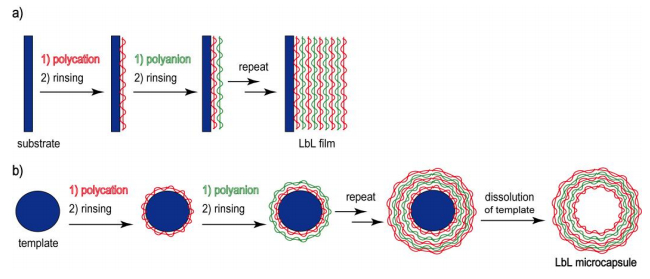
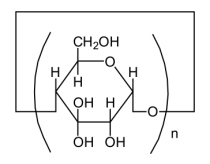

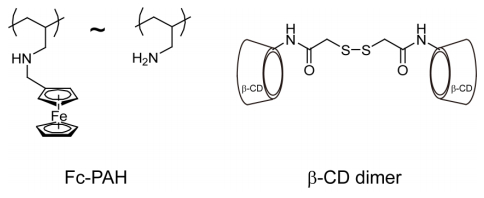
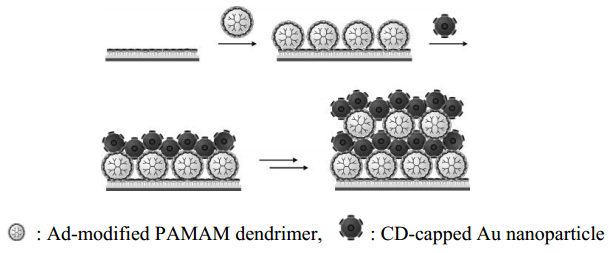
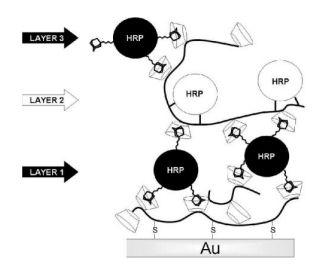
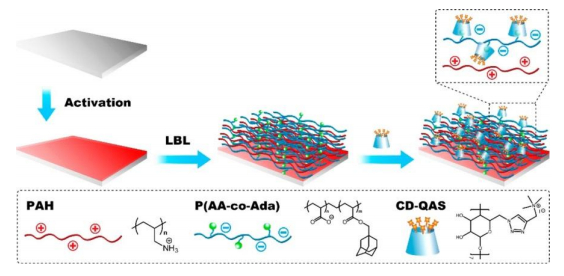



 DownLoad:
DownLoad: